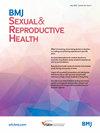求助PDF
{"title":"博茨瓦纳改进产后避孕方法选择和长效可逆避孕措施:质量改进试点。","authors":"G Justus Hofmeyr, Rebecca Jane Ryan, Aamirah Mussa, Bame Bame, Sifelani Malima, Thabo Moloi, Rebecca Luckett, Ndiwo B Memo, Badani Moreri-Ntshabele, Mercy Nkuba Nassali, Modimowame Jamieson, Kyungu M Kime, Chelsea Morroni","doi":"10.1136/bmjsrh-2022-201748","DOIUrl":null,"url":null,"abstract":"© Author(s) (or their employer(s)) 2023. No commercial reuse. See rights and permissions. Published by BMJ. WHY WAS CHANGE NEEDED? The most impactful and costeffective strategy to reduce maternal and perinatal mortality is to enable women to avoid unintended pregnancy. Provision of immediate postpartum contraception, promoted by the WHO, can avert more than 30% of maternal deaths and 10% of child mortality. In Botswana, the maternal mortality ratio is 166.3 deaths per 100 000 live births, unsafe abortion is consistently in the top three contributors to maternal mortality, over 40% of pregnancies are unintended, and the adolescent birth rate is 44.7 per 1000 women; multiple indicators which demonstrate high unmet need for contraception. Preventing unintended pregnancy in women living with HIV confers additional benefits in terms of optimising healthy pregnancies and reducing vertical HIV transmission. Longacting reversible contraception (LARC), that is, the copper intrauterine device (IUD), the hormonal intrauterine system (IUS) and the progestogenonly implant, are recommended by the WHO as the most effective contraceptive methods. Despite this, LARC use was negligible in the most recent Botswana Demographic Survey conducted in 2017, with contraceptive prevalence predominantly comprised of condom use. Initiation of IUDs immediately postpartum is limited in many countries outside of specific implementation programmes. Techniques unique to postdelivery, intracaesarean section (Csection) or postevacuation IUD insertion differ from those used for interval IUD insertion and, therefore, require specific provider training, which is not widely available in Botswana.","PeriodicalId":9219,"journal":{"name":"BMJ Sexual & Reproductive Health","volume":" ","pages":"293-297"},"PeriodicalIF":3.4000,"publicationDate":"2023-10-01","publicationTypes":"Journal Article","fieldsOfStudy":null,"isOpenAccess":false,"openAccessPdf":"","citationCount":"1","resultStr":"{\"title\":\"Improving postpregnancy contraceptive method choice and long-acting reversible contraception provision in Botswana: a quality improvement pilot.\",\"authors\":\"G Justus Hofmeyr, Rebecca Jane Ryan, Aamirah Mussa, Bame Bame, Sifelani Malima, Thabo Moloi, Rebecca Luckett, Ndiwo B Memo, Badani Moreri-Ntshabele, Mercy Nkuba Nassali, Modimowame Jamieson, Kyungu M Kime, Chelsea Morroni\",\"doi\":\"10.1136/bmjsrh-2022-201748\",\"DOIUrl\":null,\"url\":null,\"abstract\":\"© Author(s) (or their employer(s)) 2023. No commercial reuse. See rights and permissions. Published by BMJ. WHY WAS CHANGE NEEDED? The most impactful and costeffective strategy to reduce maternal and perinatal mortality is to enable women to avoid unintended pregnancy. Provision of immediate postpartum contraception, promoted by the WHO, can avert more than 30% of maternal deaths and 10% of child mortality. In Botswana, the maternal mortality ratio is 166.3 deaths per 100 000 live births, unsafe abortion is consistently in the top three contributors to maternal mortality, over 40% of pregnancies are unintended, and the adolescent birth rate is 44.7 per 1000 women; multiple indicators which demonstrate high unmet need for contraception. Preventing unintended pregnancy in women living with HIV confers additional benefits in terms of optimising healthy pregnancies and reducing vertical HIV transmission. Longacting reversible contraception (LARC), that is, the copper intrauterine device (IUD), the hormonal intrauterine system (IUS) and the progestogenonly implant, are recommended by the WHO as the most effective contraceptive methods. Despite this, LARC use was negligible in the most recent Botswana Demographic Survey conducted in 2017, with contraceptive prevalence predominantly comprised of condom use. Initiation of IUDs immediately postpartum is limited in many countries outside of specific implementation programmes. Techniques unique to postdelivery, intracaesarean section (Csection) or postevacuation IUD insertion differ from those used for interval IUD insertion and, therefore, require specific provider training, which is not widely available in Botswana.\",\"PeriodicalId\":9219,\"journal\":{\"name\":\"BMJ Sexual & Reproductive Health\",\"volume\":\" \",\"pages\":\"293-297\"},\"PeriodicalIF\":3.4000,\"publicationDate\":\"2023-10-01\",\"publicationTypes\":\"Journal Article\",\"fieldsOfStudy\":null,\"isOpenAccess\":false,\"openAccessPdf\":\"\",\"citationCount\":\"1\",\"resultStr\":null,\"platform\":\"Semanticscholar\",\"paperid\":null,\"PeriodicalName\":\"BMJ Sexual & Reproductive Health\",\"FirstCategoryId\":\"3\",\"ListUrlMain\":\"https://doi.org/10.1136/bmjsrh-2022-201748\",\"RegionNum\":3,\"RegionCategory\":\"医学\",\"ArticlePicture\":[],\"TitleCN\":null,\"AbstractTextCN\":null,\"PMCID\":null,\"EPubDate\":\"2023/2/28 0:00:00\",\"PubModel\":\"Epub\",\"JCR\":\"Q1\",\"JCRName\":\"FAMILY STUDIES\",\"Score\":null,\"Total\":0}","platform":"Semanticscholar","paperid":null,"PeriodicalName":"BMJ Sexual & Reproductive Health","FirstCategoryId":"3","ListUrlMain":"https://doi.org/10.1136/bmjsrh-2022-201748","RegionNum":3,"RegionCategory":"医学","ArticlePicture":[],"TitleCN":null,"AbstractTextCN":null,"PMCID":null,"EPubDate":"2023/2/28 0:00:00","PubModel":"Epub","JCR":"Q1","JCRName":"FAMILY STUDIES","Score":null,"Total":0}
引用次数: 1
引用
批量引用
Improving postpregnancy contraceptive method choice and long-acting reversible contraception provision in Botswana: a quality improvement pilot.
© Author(s) (or their employer(s)) 2023. No commercial reuse. See rights and permissions. Published by BMJ. WHY WAS CHANGE NEEDED? The most impactful and costeffective strategy to reduce maternal and perinatal mortality is to enable women to avoid unintended pregnancy. Provision of immediate postpartum contraception, promoted by the WHO, can avert more than 30% of maternal deaths and 10% of child mortality. In Botswana, the maternal mortality ratio is 166.3 deaths per 100 000 live births, unsafe abortion is consistently in the top three contributors to maternal mortality, over 40% of pregnancies are unintended, and the adolescent birth rate is 44.7 per 1000 women; multiple indicators which demonstrate high unmet need for contraception. Preventing unintended pregnancy in women living with HIV confers additional benefits in terms of optimising healthy pregnancies and reducing vertical HIV transmission. Longacting reversible contraception (LARC), that is, the copper intrauterine device (IUD), the hormonal intrauterine system (IUS) and the progestogenonly implant, are recommended by the WHO as the most effective contraceptive methods. Despite this, LARC use was negligible in the most recent Botswana Demographic Survey conducted in 2017, with contraceptive prevalence predominantly comprised of condom use. Initiation of IUDs immediately postpartum is limited in many countries outside of specific implementation programmes. Techniques unique to postdelivery, intracaesarean section (Csection) or postevacuation IUD insertion differ from those used for interval IUD insertion and, therefore, require specific provider training, which is not widely available in Botswana.


